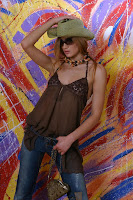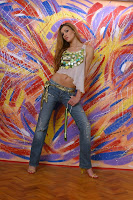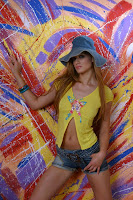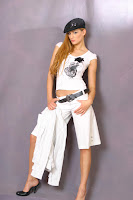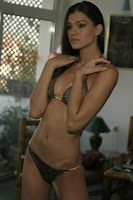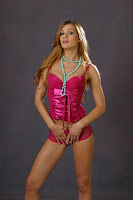Archive for June 2010
 Readers of this blog may know that I’m a big fan of the British science fiction show “Doctor Who.” The lead character, the Doctor – a Time Lord from the planet Gallifrey - is one of my two heroes of British television. The other, an old chap by the name of Victor Meldrew, is the main character in the hilarious Britcom “One Foot in the Grave.”
Readers of this blog may know that I’m a big fan of the British science fiction show “Doctor Who.” The lead character, the Doctor – a Time Lord from the planet Gallifrey - is one of my two heroes of British television. The other, an old chap by the name of Victor Meldrew, is the main character in the hilarious Britcom “One Foot in the Grave.”Victor is forced into retirement when he’s replaced by a machine and he is now at war with the world. One of his favorite phrases, which he utters (rather frequently) upon encountering something mind boggling, is “I don’t be-lieve it!”
Well, I’ve written all of that to preface the fact that I recently had a mind boggling, “I don’t be-lieve it!” kind of moment myself. In reviewing the photos that I’ve posted here on the blog this year, I saw that I’ve posted just one – one! – outdoor nude photo up to this point. Pretty much half-way finished with the year and just one outdoor nude – and that was done five months ago. Conve
 rsely, I’ve posted a bunch indoor nudes, most or all studio work.
rsely, I’ve posted a bunch indoor nudes, most or all studio work.This may not seem very earth shaking, were it not for the fact that I definitely prefer to photograph nudes outdoors than in some studio. Outdoors to me is the default setting for photographing nudes, and I will only work in a studio when the weather is too cold to photograph a model outside or I don’t have an outdoor location. Unfortunately, living in New York City, the weather is too cold for outdoor work most of the year and even when it isn’t, I don’t know of any locations here that are interesting and afford any kind of privacy for nude work. (I am really not partial to what I call the “hit and run” school of photography, especially as I often need to use a tripod that takes a long time to set up.)
Thinking back over the past year and a half, the only outdoor nude photos I’v
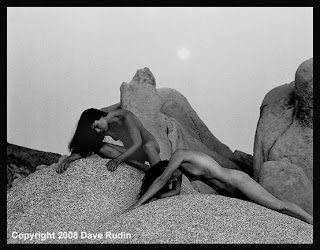 e done were an hour spent photographing two models out in the snow under horrendous lighting conditions in Ohio this February (two and a half rolls of film, and two still need to be developed) and the two day workshop I attended on the Oregon coast last year. That’s pretty much it. Otherwise, I’ve been stuck inside a studio – mostly the one I set up in my living room that’s pretty restrictive.
e done were an hour spent photographing two models out in the snow under horrendous lighting conditions in Ohio this February (two and a half rolls of film, and two still need to be developed) and the two day workshop I attended on the Oregon coast last year. That’s pretty much it. Otherwise, I’ve been stuck inside a studio – mostly the one I set up in my living room that’s pretty restrictive.This won’t solve my problem of how to photograph outdoor nudes in the future, but as far as the blog here is concerned, I still have plenty of film from the great outdoors that has yet to be scanned and/or posted. I just need to find the time to scan and edit them. The photos you’re seeing here, made two years ago at Joshua Tree National Park in California, are among that horde and were recently scanned. The two models are Amber Gangi and Candace Nirvana (or, as I like to think of them, “the Bobsey twins” of the art nude modeling world).
Hopefully, it won’t take me another five months to post some outdoor nudes.
**************************************************************************

Gilot Speaks
I’ve written in the recent past that I’ve seen a bunch of different Picasso exhibits at galleries and museums here in the New York area. Even in Japan, at an open air art museum in Hakone, I saw a lot of Picasso works at a pavilion dedicated solely to them. Then, I attended one more Picasso event yesterday that should be the culmination of them.
At the Metropolitan Museum of Art, there was a series of three lectures about Picasso, followed by a film showing the artist at work. I didn’t find the first lecture, about Picasso as a poet, to be terribly interesting. His poetry, which he began writing in 1935 – in Spanish, then in French, and then again in Spanish - is rather convoluted to say the least, though I suppose that does say something about him.
The third lecture, mostly about the collecting of Picasso works in the United States, was much more interesting. The greatest surprise was to hear that two people who were very pivotal in bringing Picasso to America were Alfred Stieglitz and Edward Steichen! Yes, that’s right. Stieglitz and Steichen – a couple of photographers!
I knew that Stieglitz, with his Gallery 291 in New York, tried to get photography accepted as an art fo
 rm. What I did not know was that in 1911 – two years before the famous Armory show – Stieglitz mounted a show of over 80 Picasso works at his gallery in an effort to bring new art to America. Steichen’s role was as Stieglitz’s lookout in Paris for things of interest on the continent.
rm. What I did not know was that in 1911 – two years before the famous Armory show – Stieglitz mounted a show of over 80 Picasso works at his gallery in an effort to bring new art to America. Steichen’s role was as Stieglitz’s lookout in Paris for things of interest on the continent. Stieglitz even tried to convince the trustees of the Met to buy the entire collection, but of course the trustees balked at that idea. He did, however, buy an important cubist drawing of a nude woman for himself, and that drawing was later donated to the Met by Stieglitz’s widow, Georgia O’Keefe.
Still, the most interesting speaker was the second one, Francoise Gilot. A well regarded artist in her own right, she is nonetheless perhaps best known as Picasso’s mistress from 1944 and to 1953 and as the mother of Paloma and Claude Picasso. (You can see her here cavorting on the beach with Picasso in a famous photo by Robert Capa.)

When I saw this event listed on the Met’s calendar several months ago, I knew that I wanted to go. I was thinking of staying home as I hurt my back a week ago and it was still bothering me, but I didn’t want to use that as an excuse for laziness. It was worth the effort of going just to hear this lecture alone.
I thought she’d talk about her life with Picasso, but instead she gave us an illustrated overview of Picasso’s artistic output, speaking as the artist that she is and punctuated with anecdotes that only a person with her relationship to Picasso could give. Some of the most interesting comments, not surprisingly, were about paintings that Picasso made of her. In one of those paintings she’s seen in profile, and standing as she was at the podium in profile to my view, I could see that years later she’s still identifiable as the woman in the painting.
You can click on the photos with the projected artwork to see them much larger. She is depicted in both paintings. The painting of her as a flower, she said, was inspired by Henri Matisse. When Picasso introduced
 her to Matisse, after convincing her not to go to see work by Pierre Bonnard – an artist whose work she still loves – Matisse said he wanted to depict her with a blue body and leaf green hair. I guess he didn’t do it, but Picasso evidently did!
her to Matisse, after convincing her not to go to see work by Pierre Bonnard – an artist whose work she still loves – Matisse said he wanted to depict her with a blue body and leaf green hair. I guess he didn’t do it, but Picasso evidently did! Just to finish up, the film was Henri-George Clouzot’s 1955 film, “The Mystery of Picasso.” I thought it would be a documentary about Picasso at work. What it showed, in fact, was the process of Picasso creating pictures, filming a translucent ‘canvas’ from behind while Picasso worked on it with markers and inks. Fascinating stuff, but perhaps best seen on video with the ability to take breaks between the pictures, as seeing it all at one sitting can be a bit much.

The geisha is probably one of the best known symbols of Japan here in the western world. A painted woman who is the gateway to illicit and forbidden pleasures.
If that’s what most westerners think, then most westerners are wrong. Geisha are not prostitutes. Rather, they are women who are highly trained and skilled in the traditional Japanese arts of music, song and dance. They are also pretty rare, as I’ve read that there are estimated to be no more than 1,000 of them in all Japan.
On my three trips to Japan, including the one last month, I have only seen them in Kyoto, the former imperial capital. In the Kyoto dialect, they are called “geiko,” not “geisha.” There are also two ty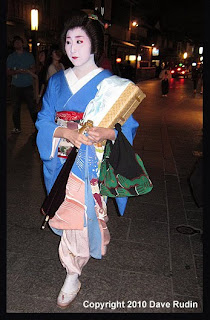 pes: “geiko,” who are full-fledged at their craft, while the newer, younger performers are called “maiko.”
pes: “geiko,” who are full-fledged at their craft, while the newer, younger performers are called “maiko.”
 pes: “geiko,” who are full-fledged at their craft, while the newer, younger performers are called “maiko.”
pes: “geiko,” who are full-fledged at their craft, while the newer, younger performers are called “maiko.”I am certainly no expert on the subject, but having done some reading and gone on a walking tour in Kyoto, I have learned three basic ways to distinguish the two when seeing them on the street (if I’m lucky enough to see any, that is.)
A geiko wears a fairly short ‘obi’ (sash) on her back, while that of a maiko is much longer. I think a maiko’s kimono also has longer sleeves.
A geiko wears a wig, while maiko wax their hair and usually seem to have some kind of ornamentation hanging from it.
The back of a geiko’s neck is fully painted white, while a maiko has two flesh colored (that is, unpainted) points left on the back of her neck.
In Kyoto, the only place where I had seen any geiko or maiko going about their business of walking from one engagement to another has been Gion, the old entertainment district. On my first night in Kyoto this year, I walked about half an hour from my hotel to Hanami-koji, a cobblestone street which is probably the most famous in Gion, both sides of it being lined with teahouses where geiko and maiko perform (though as I read somewhere, people don’t there to drink only tea!)
I happened to get there at the right moment, as a geiko and two maiko were just leaving one of the most famous teahouses on their way to one around the corner. Somet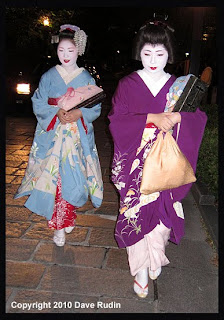 imes one can go to this area and not make any spottings, so I was fortunate to see three together on my first night in town.
imes one can go to this area and not make any spottings, so I was fortunate to see three together on my first night in town.
 imes one can go to this area and not make any spottings, so I was fortunate to see three together on my first night in town.
imes one can go to this area and not make any spottings, so I was fortunate to see three together on my first night in town. That night, I also met an Australian photographer with a big SLR who told me he had published a book of geiko/maiko photos, so I jokingly called him a geiko paparazzo. I’ve read that tourists and others getting in the way of these women just to photograph them can be a problem (as they normally don’t stop for photos), so I kept a respectful distance and managed to get one decent photo, which can be seen at the top. Note the long sash and the ornamented hair, so it’s obvious that this girl is a maiko.
Later on, further down the street, with nobody else around, I saw a geiko dressed in a beautiful white kimono silently walk in my direction before making a right turn into a tea house. I didn’t even think of trying to get a photo. It was just a beautiful sight to see.
I made three more visits to Hanami-koji and Gion. The next time was with a woman from our tour who wanted to go there, so I acted as her tour guide. We did not see any geiko or maiko in Gion. A night later, on the rainy night that I went out photographing with my tripod, I finished up my rounds with a visit to Hanami-koji. I didn’t take any photos there, but I did see a group of three maiko silently walk by coming from a side street. Again, I just watched.
The last visit, though, was a big one. After having a nice dinner on our final night of the tour, our guide took u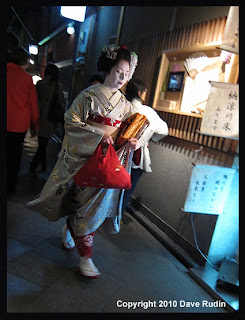 s on a little walking tour of Gion. Starting with Hanami-koji, we spotted a geiko walking up the street toward us. I managed to get a photo (the second photo from the top here.)
s on a little walking tour of Gion. Starting with Hanami-koji, we spotted a geiko walking up the street toward us. I managed to get a photo (the second photo from the top here.)
Then, on Shinbashi-dori, another lovely street in the area, we saw a geiko (right, in the third photo) and a maiko (left) coming up the street! Again, as you can seek, a got a photo, though this one wasn’t easy, as I’d taken a spot directly in their path for the photo and had to jump out of the way at the last moment.
 s on a little walking tour of Gion. Starting with Hanami-koji, we spotted a geiko walking up the street toward us. I managed to get a photo (the second photo from the top here.)
s on a little walking tour of Gion. Starting with Hanami-koji, we spotted a geiko walking up the street toward us. I managed to get a photo (the second photo from the top here.)Then, on Shinbashi-dori, another lovely street in the area, we saw a geiko (right, in the third photo) and a maiko (left) coming up the street! Again, as you can seek, a got a photo, though this one wasn’t easy, as I’d taken a spot directly in their path for the photo and had to jump out of the way at the last moment.
Finally, across the Kamogawa river from Gion, in a very narrow pedestrian-only street called Pontocho, we saw another maiko go wizzing by. I had never seen a geiko or maiko outside of Gion before, but I had seen a maiko hurrying around a corner to disappear down Pontocho, her obi flying like a cape behind her, on my first night in Kyoto this year. On this final night, however, I was able to get a photo (fourth from the top), and you can see that it looks rather like an action shot.
Incidentally, for those who may be wondering, seeing a geiko or maiko on the street may be a hit or miss proposition, but it’s still easier to see one that way than to attend a performance at a tea house. Being a guest at such an event costs hundreds of dollars, and even if you have the money, you’ve still got to know somebody. This is a world of referrals , and to be invited to see a geiko or maiko perform, you’d most likely need a letter of introduction from someone who is already known and on good terms with the management of each locale.

About a week and a half back, I posted (here) a photo of Nettie R. Harris wearing one of the masks that I bought in Venice. Here, as promised, is the follow-up.
That photo was a straightforward image of Nettie with the mask. I’m posting another one like that today but with a wider view. (See below.) The image at the top was made the same day. She’s also wearing a mask. Like the other image, this mask is white on the right side (left side as seen by the viewer), but the left side appears to be mostly transparent. Is it transparent? Is it a different mask?
The answer to both questions is ‘no.’ Nettie was wearing the same mask. I just tried to do something a little more creative – in this case, by employing the double exposure technique.
For those unfortunate digiheads out there who know absolutely nothing about using film, here’s a little primer. When using black and white negative film, objects on film will appear the opposite way that they do in reality. (That’s why they’re called ‘negatives.’)
Therefore, something which is very bright to our eyes will appear very dark on the negative film. Something which is moderately bright will appear moderately dark. These differences in gradations of light , composed of silver halide particles, are the source of different tones in an image.
So, if something that’s bright white (like the white side of the mask) will appear very dark and black on the negative, then the black side of the mask will appear very white on the film. Right???
Wrong! The only thing that appears on a negative are different grades of black.
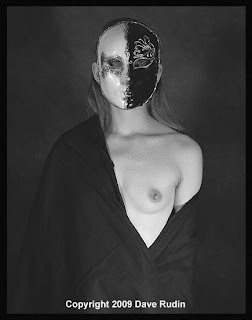 The brighter the object, the denser the black will be. If there is no brightness at all, as in dark black (which is not a color, but represents the absence of any color), that part of the negative will have no silver halide particles formed on it. As the film base is clear, so too will that part of the negative be clear.
The brighter the object, the denser the black will be. If there is no brightness at all, as in dark black (which is not a color, but represents the absence of any color), that part of the negative will have no silver halide particles formed on it. As the film base is clear, so too will that part of the negative be clear.I knew from this that the white side of the mask would appear dark on the film, while the black side would be clear. As the white side would be dark, I knew that nothing would be added to it by exposing the negative a second time. It would be so dark that it really couldn’t get any darker.
The black side of the mask, on the other hand, would be clear on the negative. Anything on that part of the negative during a second exposure would be recorded and seen, as there’d be nothing there previously to block it.
With a photo like this, everything in both exposures must be exactly the same with the exception of the mask being there. I made sure the camera was securely locked in position on the tripod. I asked Nettie to lie down on the floor, as it would be impossible for anyone to keep perfercty still while standing. The first exposure was made with her wearing the mask. Then I re-set the shutter without advancing the film, removed the mask and made the second exposure. I used half of the normal exposure time for each exposure, as the two together would add up to one normal exposure.
Of course, even though I knew the photographic theory that I’ve just related, I really had no idea how the picture would look until I developed the film and saw the actual image. I think it looks pretty good. Everything in the theory seems to have proven true.
Still, I have to give a lot of credit to Nettie. While it may be fairly simple to remain motionless while lying on the ground, keeping one’s eyes from moving is not so easy – and I think she did a great job of it.
***********************************************************************
Speaking of black & white negative film, I recently bought a print from a benefit auction that was raising money for Doctors Without Borders' relief effort in Haiti. Of the approximately 145 mostly contemporary photographs in the auction, only about half a dozen were silver gelatin prints. Granted, most of the photos were color images. Stil, to me, this shows a pretty sad state of affairs for photography, as we've entered an era when the idea of a photograph being a hand crafted fine art object is a thing of the past.
As I have said before and will state again, as a collector, I will never buy a digital print, no matter how much I may like the image. The print that I bought is one of those half dozen silver prints - but the image does date from a dozen years ago when film was still dominant.

I wrote last time that I would be having a model staying with me for a few days. That model was the lovely St. Merrique.
She spent several days modeling here in New York, and on her final morning here I worked with her
 for a few hours in my studio set-up. You can see a couple of the snapshots I made with my pocket digital camera during the session, plus one of Merrique made when we went out to eat a Chinese-run Japanese restaurant one night.
for a few hours in my studio set-up. You can see a couple of the snapshots I made with my pocket digital camera during the session, plus one of Merrique made when we went out to eat a Chinese-run Japanese restaurant one night. Things went reasonably well during the studio session, though there was one constant annoyance (which we both found annoying) that I hope to write about in an upcoming post.
Still, in addition to the problem mentioned above, I’m wondering how much longer I can go on photographing in my living room as I did this time. As
 you can see, I’m still working with masks as props – this time once again with the masks I bought in Venice last year – but I just get the feeling that I’m taking the same photo of a model standing there in front of the background, over and over again.
you can see, I’m still working with masks as props – this time once again with the masks I bought in Venice last year – but I just get the feeling that I’m taking the same photo of a model standing there in front of the background, over and over again. How much longer can I continue doing that???

My posting tonight will be a quick one. The photo here depicts a young woman wearing one of the papier mache masks that I bought last year in Venice, Italy. The woman behind the mask is Nettie R. Harris.
I’ve found in working with this mask that it can take on different characteristics depending upon how I set up my studio lights. Sometimes I would move the lights off to the side, which would leave inky black voids where the eyes are, lending an air of mystery to the image. Here, though, I made the lighting more frontal so that Nettie’s beautiful eyes could clearly be seen.
I’m hoping to make a follow-up posting to today’s entry next week.
*****************************************************************************
Otherwise, I’ve got another visitor staying with me this week. This time my guest is a model. I won’t say who she is until I’ve photographed her (planned for this coming weekend) and have a photo or two to post, but for now I’ll just say that she’s beautiful and that she’s a cover girl.
Otherwise, I’ve got another visitor staying with me this week. This time my guest is a model. I won’t say who she is until I’ve photographed her (planned for this coming weekend) and have a photo or two to post, but for now I’ll just say that she’s beautiful and that she’s a cover girl.
Stay tuned.

I spent most of last weeking trying to adjust back to New York time following my recent return home form Japan. I’ve heard it said that one requires one day for each hour of change in time zones to return to normal, so as Japan is 13 hours ahead of New York, I’ve still got a few days left.
That, of course, is in addition to finding room where to put all of the stuff that I bought in Japan, most of which is still stacked up in a pile on the floor here. (Maybe this week.)
I was hoping to do some film developing this weekend. I think I’ve got about 30 rolls to do, dating back to my trip to Ohio in February. That didn’t happen. I woke up late yesterday and didn’t feel like doing much of anything, and that’s pretty much what I did, though I did pull myself together for several hours late in the afternoon, during which time I filed away the 13 rolls of film from Ohio that had been developed but not yet put into pages. (So, the day wasn’t a complete waste.)
All but part of the last roll were photos that I made of models Ophidian Marie and Revielle in my friend Dave Levingston’s new studio in Dayton. I scanned a couple of those photos today and I’m posting them here.

At the top is an image of Revielle from the very beginning of our session. She seems to have adopted the frequent pose of Harry Carey, the old time actor. (John Wayne used the same pose at the end of “The Searchers” as a tribute to Carey.)
Attired in black and white stripes is Ophidian Marie. It may look similar, but no, she is not wearing a tallis.
******************************************************************************
******************************************************************************
I watched a couple of movies on blu-ray this weekend. The first was “Speed,” the action film with Keanu Reeves and Sandra Bullock. I’d been planning to watch it sometime soon, but I watched it this weekend as a tribute to Dennis Hopper, the actor who died recently and played the bad guy in the film. Some of you may not be aware of it, but Hopper was also a serious photographer and artist. You can read a story about him and his photography by clicking here.
Then last night I watched the Coen brothers’ film “Fargo.” I had never seen it before, and it was very well made, I thought, beginning with the great musical score by Carter Burwell. Most of the action takes place in Minnesota. One scene takes place in a restaurant, and the place where it was filmed looked a lot like some of the restaurants in Ohio that Dave L took me to in February. Is this what a generic Midwestern restaurant looks like?
Of course, I have never been to Minnesota itself, so maybe one day I’ll have to pay a visit to find out if people there really do talk like the folks in the movie – yaa???

